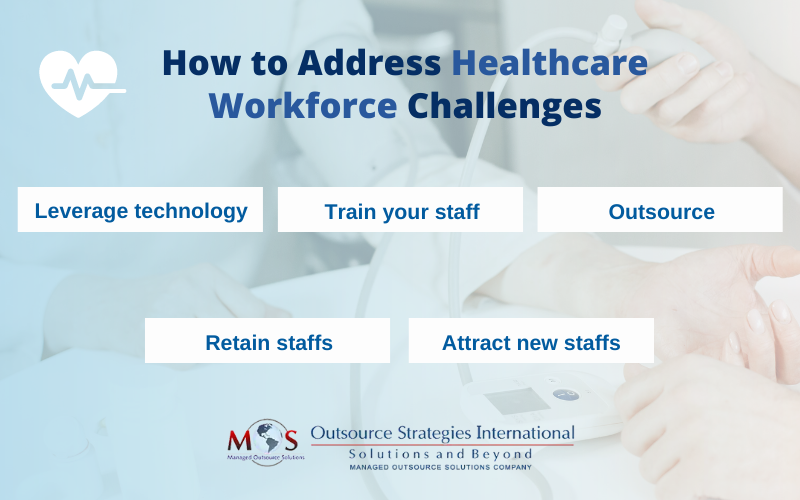The healthcare industry is undergoing a radical change marked by the aftermath of the global pandemic, AI revolution, increasing patient expectations, and workforce shortage. In the eye of this storm lies revenue cycle management (RCM), the lifeline of healthcare providers, ensuring financial sustainability and revenue optimization. To gain a strong footing in the industry, every healthcare provider must strive to stay on top of the emerging trends and integrate them into their practice.


Transform your RCM outcomes with value-added solutions from our revenue cycle management specialists.
According to a report published by technavio, the revenue cycle management market in the US is estimated to grow by $11,985.2 million progressing at a CAGR of 9.94% between 2022 and 2027. This growth is attributed to various factors including the increased focus on lessening revenue leakage, adopting value-based reimbursement models, and software implementation.
Healthcare Revenue Cycle Management Trends to Watch out for in 2024
- Adoption of artificial intelligence:
Automation and artificial intelligence are leading a revolution across the industry offering vast improvements in the areas of billing, coding, claims processing, denial management and administrative work. The future of the healthcare industry is reliant on navigating advanced AI-driven technology along with the existing systems to streamline your workflow, deliver high-quality patient care and optimize revenue strategies.
Despite delivering an excellent healthcare experience to your patients, if the financial and administrative sides of your practice fall short, it can leave an unfavorable impression on your patients. If you embrace AI-powered RCM solutions in your practice, you not only increase efficiency at work by reducing repetitive tasks but also improve your financial standing and minimize revenue leakage.
- Mergers and acquisitions (M&A):
In a survey conducted by HealthLeaders, 65% participants expected increase in M&A activity over the next three years. Healthcare organizations target acquisition opportunities as a strategy to expand into new geographical areas, add clinical specializations, and reduce financial distress. When two companies decide to merge, it is likely that both of them have made great efforts to ensure their revenue cycles are supplemented with the right technology. Such mergers have now become a promising way for healthcare firms to achieve scale and boost their revenue cycle.
- Patient financial experience and affordability:
Patient financial experience is directly linked to profitability. As patients become increasingly empowered to make healthcare decisions and are educating themselves more about their healthcare choices, they take on greater financial responsibility for their care and increasingly seek price transparency.
However, according to the fifth edition of Jarrard Inc.’s National Consumer Healthcare Survey, over 50% of customers believe that hospitals prioritize their profits over providing affordable quality care and nearly one-third of consumers cite holding back on treatment over financial concerns. In another survey by El Studios on behalf of Cedar, a whopping 93% consumers said that a bad billing experience could discourage them from going back to a specific care provider.
Simplify the medical billing process and ease the financial burden on patients by giving out timely reminders, implementing digital mode of payment and offering electronic version of their medical bill. Giving patients the price transparency they want promotes responsible consumer healthcare planning, and builds trust and loyalty. It’s also more important than ever to make care affordable.
- Staff shortage:
In a survey conducted among CEOs by the American College of Healthcare executives, it was found that workforce challenges were ranked the number one concern on the list. Staff shortage is included as well in this category, which was the number one issue in 2021.
Healthcare professionals are under immense stress, according to a survey by HealthDay which revealed that over 63% physicians and nurses experience moderate or high level of burnout at work. The top factor contributing to this data is understaffing, with 66% primary care physicians and 75% of nurses citing the same in the survey.
The main causes of this severe staff shortage include the following:
- Burnout and fatigue experienced by medical staff
- Difficulty in finding and hiring qualified, adequate staff
- Poor compensation and working conditions leading to low job satisfaction and struggle to meet high-quality patient care
- A growing number of medical professionals reaching retirement age and not enough people choosing to enter the medical field has caused disparity in the ratio between healthcare workers and patients
You can handle the above challenges through a multi-faceted approach that encompass the following:
- Leverage Technology – Implementing the latest software systems, utilizing EHR and automating tasks can reduce workload and positively impact your staff’s productivity.
- Train your staff – Cross training your staff to do multiple tasks can help to handle multiple responsibilities and staff shortage.
- Outsource – Outsourcing medical billing, coding, transcription and administrative tasks such as data entry and accounting allows your in-house staff to focus on critical chores.
- Retain staff – Keep your existing staff satisfied by creating a positive work environment and offering professional growth; enabling them to maintain work-life balance can help with staff retention and reduce employee turnover rates.
- Attract new staff – Recruiting new talents to your practice by offering internships, participating in job fairs, and implementing referral programs ensures longevity and bright future of your practice.
- Telehealth:
Telehealth and telemedicine are bridging the gap between healthcare providers and patients by ensuring healthcare accessibility, quality care and reduced costs. Ever since the pandemic, one of the most widespread trends is the adoption of telehealth and remote care solutions, with 80% of patients reporting to have received care via telemedicine at least once in their lives.
Some of the main benefits of virtual care are:
- Maintain a work-life balance by not sacrificing your personal time at your practice.
- Telemedicine offers flexibility for patients to book appointments at their own convenience leading to reduced no-shows and maximized revenue for your practice.
- You can control medical overhead costs by saving on travel expenses and shorter practice time.
- Protect yourself from exposure to various viruses and pathogens since patients don’t have to see you in-person.
- Expanding your service by providing medical care to patients who may not have immediate medical access and living beyond your network such as smaller towns, cities and rural areas helps to increase your revenue stream.
Telehealth is a viable solution that is likely to stay and transform the healthcare delivery in a convenient, timely manner. In 2024 and beyond, telemedicine services are expected to evolve further and become a staple in the healthcare industry. So, it is imperative that your service accommodates the technology to stay relevant.
Strategies for Revenue Cycle management
Choosing an experienced, technologically savvy medical billing company will ensure valuable support to optimize reimbursement. However, as the business of healthcare has become very complex, medical billing is no longer a simple administrative function. In a Beckers Hospital Review report, industry experts recommend specific new strategies to ensure that hospitals’ RCM efforts are focused and financially stable.
Tracking claim denial rate: Following up on claims and denials is a critical aspect to enhance revenue generation. It involves reviewing accounts receivable (AR) and measuring the average number of days it takes to collect the payments due and identifying patterns in payment. Automating key revenue cycle workflows, finding more efficient ways to submit clean claims, improving collection efforts, and focusing on the appeals process can reduce days in AR and boost cash flow. AR management is an important element of the RCM solutions provided by medical billing companies.
Review of chargemaster: Experts recommend that hospitals conduct a comprehensive review of their chargemaster and ensure price transparency for patients. Under CMS’ annual Inpatient Prospective Payment System rule, hospitals need to publish a list of their standard charges online to help patients understand the cost of care and prepare for any out-of-pocket costs. CMS also requires that providers update that information every year. According to a recent report from the National Association of Healthcare Revenue Integrity, an expert recommends that hospitals take the following steps to prepare to post their chargemasters online:
- Review existing state hospital pricing and price transparency requirements
- Review the chargemaster for consistent pricing
- Inform all stakeholders about the new requirements, including IT personnel responsible for the online posting of the chargemaster
- Fix a date for posting the chargemaster
- Create customer service scripts to deal with patients’ questions about the chargemaster and pricing
- Price transparency is critical to boost patient satisfaction and collection of patient financial responsibility.
- Reduce operating room delays and last-minute cancellations: Operating rooms are a very costly area of hospital operations. Depending upon the complexity of the procedure, last-minute cancellations or delays can prove very costly. When planned surgical procedures are cancelled, it leads to considerable loss of revenue and waste of resources, as well as significant psychological, social and financial consequences for patients and their families. Experts say that to improve financial performance, hospitals should review their OR operations for avoidable costs and focus on minimizing cancellations and delays in procedures. Strategies to improve OR operations include focusing on same-day cancellations, on-time procedure starts, equipment availability and parallel processing to increase efficiency.
- Using online estimator tools to help patients understand their potential out-of-pocket costs: Using a customer-friendly online estimator can ensure that patients get the information they want. A price estimator tool can boost patient satisfaction and attract more patients. When using the tool, hospitals should also post a disclaimer with standard charges, so that patients understand that the price list they are viewing may not indicate their actual out-of-pocket costs.
- Include both clinical and non-clinical interactions when considering net promoter scores: Net promoter scores reflect how likely patients are to recommend your organization to another person. Patient care involves both clinical and nonclinical support services. Even the best clinical services cannot be truly optimal without dedicated non-clinical and clinical support staff. Experts recommend that hospitals include both clinical and non-clinical interactions when considering net promoter scores.
Successful RCM and medical billing processes are essential to ensure you get paid for your services. Many organizations outsource medical billing to an experienced third-party service provider to optimize RCM. According to a Revenue Cycle Intelligence report, value-based initiatives are driving providers to prioritize RCM in their investment plans to reduce costs and improve the quality of care.
Improving automation through your patient management systems, providing more self-service capabilities and even robotic automation can help your practice reduce overall costs. Certain comprehensive strategies along with AR management solutions can assist in minimizing reimbursement issues and accelerating cash flow.





